[IT Dong-A x Ulsan City x Design-Driven Manufacturing Innovation Center]
The Korea Institute of Design Promotion has established the “Ulsan Design-Driven Manufacturing Innovation Center” at the University of Ulsan. The center supports promising small and medium-sized enterprises and startups in enhancing their design competitiveness. IT Dong-A introduces companies selected for the “Design-Driven Manufacturing Innovation Support Project” and supports their scale-up efforts.
Drones have expanded the realm of human activity into the skies. They not only offer convenience but have also established themselves as a technology that protects both public and personal safety. Today, we deploy drones to monitor wide areas and meticulously inspect large-scale facilities. They are sent to places that are difficult or dangerous for people to access, allowing tasks to be carried out safely. Delivery drones that transport goods to remote islands will eventually evolve into Urban Air Mobility (UAM) vehicles that carry people.
Amid this, the startup Vololand is contributing to the advancement of the drone market with its unique technology called the “drone station.” This device guides and lands drones, automatically replaces their batteries, and analyzes internal and external environments to ensure the drones can safely perform their tasks. With this device, drones can be operated fully unmanned, 24 hours a day. Vololand’s drone station is already in operation as a key component of the Drone Demonstration City project in Ulju County, Ulsan Metropolitan City.
 크게보기Kim Yu-gwang, Director at Korea Venture Consulting (left), and Ahn Seong-ho, CEO of Vololand, review investment strategies together Source: IT Dong-A
크게보기Kim Yu-gwang, Director at Korea Venture Consulting (left), and Ahn Seong-ho, CEO of Vololand, review investment strategies together Source: IT Dong-AVololand, in collaboration with several partner institutions including Ulju County Office, UNIST, and the Ulsan Design-Driven Manufacturing Innovation Center, is working to advance its drone station technology and distribute it nationwide. After leading the domestic shift to unmanned drone operations, the company plans to enter the global market and take the lead in this sector. CEO Ahn Seong-ho is now seeking investment to turn this vision into reality.
To help expand Vololand’s business direction, boost its achievements, and secure funding, Director Kim Yu-gwang of Korea Venture Consulting has stepped in. An expert in managing investments for early- and mid-stage companies, he has also served as a mentor for Scale-Up Korea for several years. Director Kim visited Vololand’s office in Ulsan and shared strategies for scaling up based on the company’s progress so far.
Completion and Demonstration of Drone Stations, Tethered Drones, and Heavy-Lift Delivery Drones
Ahn Seong-ho, CEO:
Hello, I'd like to begin by introducing Vololand and our accomplishments. Our core focus is on developing drone stations that serve as operational hubs for drones, as well as tethered drones and heavy-lift delivery drones. When a drone completes its mission and lands at the drone station, the station automatically replaces the battery and prepares the drone for the next task. With this device, industrial drones can be operated unmanned, 24 hours a day. We’ve already completed the development of the drone station and have supplied and are operating five units in Ulju County, Ulsan Metropolitan City.

The tethered drone developed by Vololand draws power from the ground, allowing it to fly for extended periods. This greatly expands its range of applications compared to conventional industrial drones. The company has already achieved success by supplying this system for base perimeter surveillance in the Air Force. It is also suitable for traffic monitoring and live sports broadcasting. Vololand’s tethered drone boasts a payload capacity of 8 kg and excellent flight stability.
Vololand’s heavy-lift delivery drone can carry payloads weighing up to 50 kg. It was originally designed to rapidly deliver protective gear to workers in the event of an accident at a power plant. Due to its high potential and practical value, multiple local governments—including Gumi and Uiseong in North Gyeongsang Province—are showing strong interest in the heavy-lift drone. Based on this product, the company aims to commercialize delivery drones by 2027.
Rather than targeting the B2C market, Vololand focuses on B2G and B2B sectors. The company is paying close attention to the growing B2B drone market, especially surveillance drones for large-scale facilities like power plants and military bases. It is enhancing its technology in this area to respond to market demands. At the same time, it is working on the localization of drone components and foundational technologies, as well as strengthening software capabilities. Examples include flight controllers that improve operational safety, and AI edge computers that can analyze images and footage captured by drones in real time. These technologies will also be refined to support future development of UAM power supply and monitoring systems, as well as power conversion modules for electric vehicles.
Vololand is eager to discuss investment strategies to turn these plans into reality.
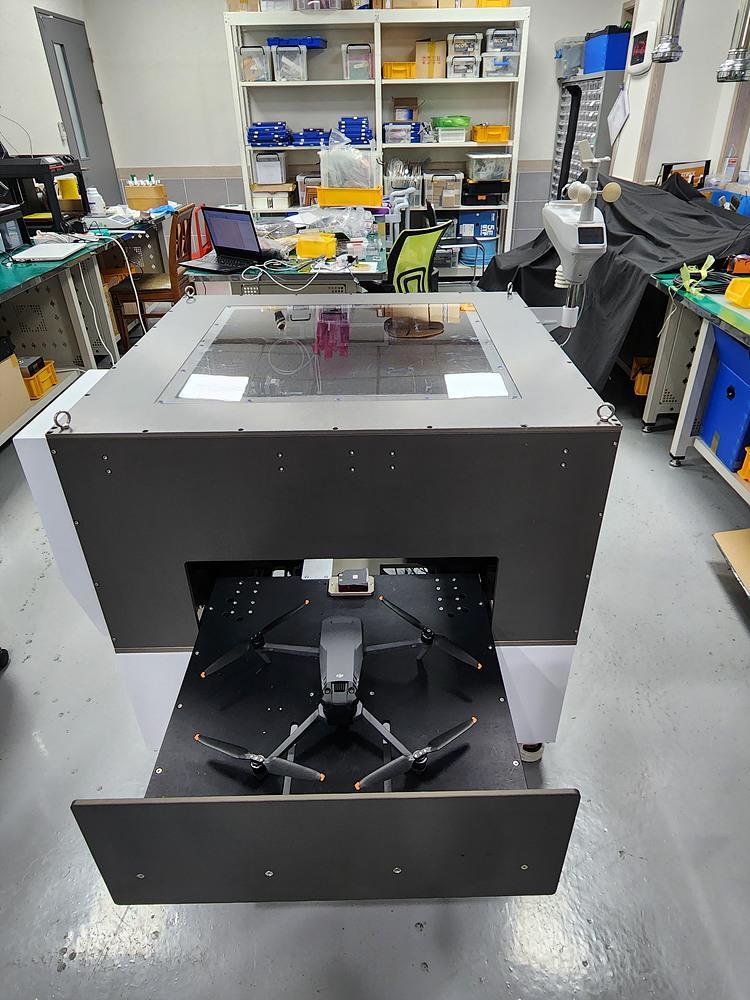
Kim Yu-gwang, Director:
The consumer drone market is almost like a white elephant—plagued by regulations and limitations. It would be wiser to focus on B2B and industrial drones. Among those, delivery drones are expected to see increasing use. But before that, I’m curious about the performance of Vololand’s core product, the drone station. Isn’t it difficult to operate in extremely cold or hot weather? Have you addressed the risk factors associated with battery use, such as thermal runaway?
Ahn Seong-ho, CEO:
Vololand’s drone station is equipped with a high-level monitoring system both inside and out. It collects external weather data—such as rainfall, temperature, and wind speed—and determines whether the drone can be safely operated. In poor weather, the risk of accidents increases, so the system helps prevent that. Internally, we’ve integrated a heating and cooling system to maintain a stable temperature and manage the drone’s battery effectively. The station can be powered not only by standard electricity but also through solar panels or hydrogen packs. We also have the capability to customize the drone station according to drone type and features. Thanks to our technological expertise, we are currently conducting an R&D project under a conditional purchase agreement for a tower-type multi-station that can manage three to four drones simultaneously.
Strengthening Hardware and Software Capabilities, and Aiming to Standardize Drone Stations
Kim Yu-gwang, Director:
To scale distribution, it’s important to reduce manufacturing costs as much as possible without compromising the essence of the product. Above all, I think it would be ideal to establish drone stations as an industry standard. Standardizing the full operational cycle—landing, battery replacement, and automatic takeoff—for industrial drones would allow other drone companies to adopt the technology, thereby increasing Vololand’s influence and solidifying its position in the market.
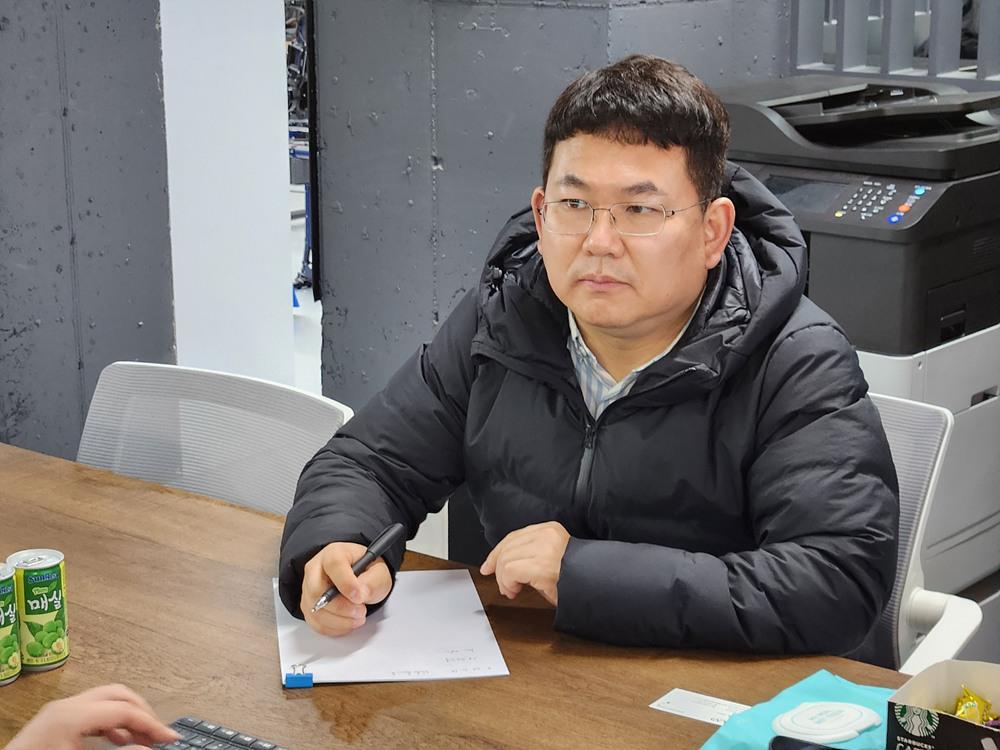 크게보기
크게보기Naturally, as this progresses, the number of companies using Vololand’s drone stations will increase. Rather than directly approaching drone manufacturers for sales, it’s better to encourage them to adopt Vololand’s drone stations with ease and to help expand both the operational range and flight duration of their drones. To make this a reality, strong software development capabilities are essential for efficient drone station operation. How well-developed is Vololand’s capability in this area?
Ahn Seong-ho, CEO:
Thank you for the advice. Vololand’s main strengths in drone software development lie in two areas: drone operation and control software. When these are combined, standardizing the drone station becomes achievable. However, Vololand is still an early-stage startup. For now, we’re focused on hardware research and development. The drone market still places greater emphasis on hardware than on software. Once we’ve solidified our hardware capabilities, we plan to further advance our software development.
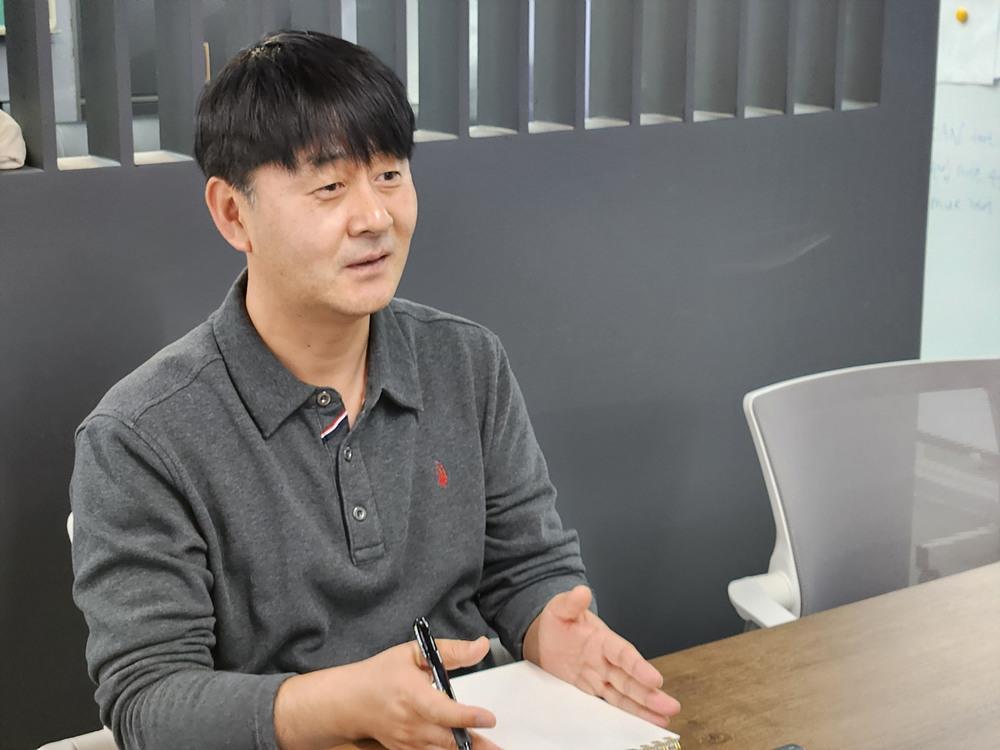 크게보기Ahn Seong-ho, CEO, discusses investment strategies with Director Kim Yu-gwang Source: IT Dong-A
크게보기Ahn Seong-ho, CEO, discusses investment strategies with Director Kim Yu-gwang Source: IT Dong-AKim Yu-gwang, Director:
If Vololand doesn’t move to standardize and distribute its drone station to the market, it will soon face challenges from competitors. Competitors always act quickly—they copy and benchmark the frontrunners. If that happens, it will become difficult to highlight Vololand’s technological edge and strengths.
Strategically, Vololand should consider distributing drone operation software compatible with its drone stations for free. This will encourage drone manufacturers to design their products to work with Vololand’s stations. Not all companies will adopt it, but there will certainly be drone makers whose models are well-suited to Vololand’s systems. Provide them with firmware or software so they can operate with Vololand’s drone station. Promote the fact that this improves operational environments and expands application areas. Word will spread, and in the process, Vololand’s influence in the market will grow.
From this perspective, Vololand should prioritize strengthening its software capabilities. This will not only help in standardizing the drone station, but also in improving the performance of industrial drones. Naturally, a broader drone platform centered around Vololand will emerge. That is your competitive edge—and a strong point of appeal for attracting investment.
 크게보기
크게보기Kim Yu-gwang, Director:
Investors will be closely watching not only what Vololand has achieved so far, but also how much of the drone-related infrastructure market it can capture moving forward. It’s not enough for the products to simply look impressive—they must embody technologies that span the entire drone market, including B2C, B2G, and B2B, and demonstrate influence not only in Korea but in the global drone industry. Investment must become a springboard for global expansion.
First, refine and distribute Vololand’s strengths: the drone station and heavy-lift delivery drone. At the same time, strengthen your drone software development capabilities and focus on establishing the drone station as a market standard. This will position Vololand as a central player in Korea’s drone industry. If you develop a plan to enter the global market based on these achievements and include it in your business proposal, I believe you’ll have a highly attractive case for investment.
Explore New Markets Beyond Delivery and Surveillance—Such as Leisure and Tourism
Kim Yu-gwang, Director:
In addition to scaling up your drone station and heavy-lift drone technologies, your business plan should also include a variety of strategies for achieving broader success. What strategies has Vololand outlined?
Ahn Seong-ho, CEO:
We’ve carefully studied both the domestic and global drone markets to build our strategy. First, we’re actively participating in government-led drone projects. Ministries such as the Ministry of Land, Infrastructure and Transport and the Ministry of the Interior and Safety are strongly supporting and fostering the drone industry in Korea. There are now 47 designated drone special free zones nationwide, created to support research and development in drone-related technologies.
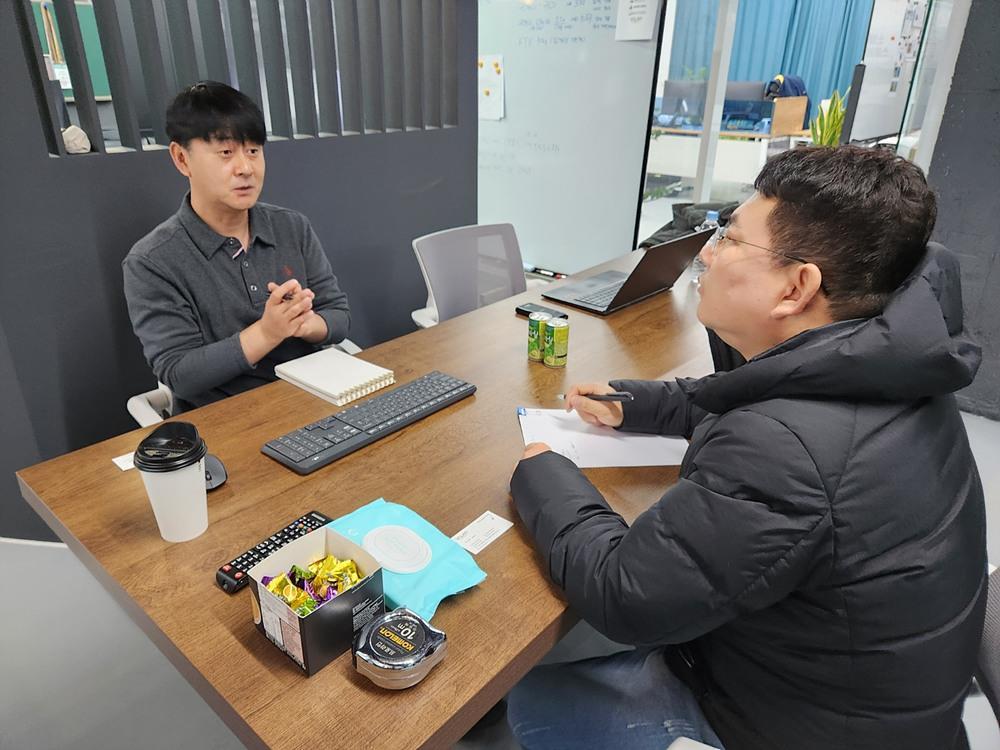 크게보기
크게보기Vololand is participating in the Ministry of Land, Infrastructure and Transport’s 2nd Basic Plan for Drone Industry Development and Regulatory Reform Roadmap 2.0, conducting drone station demonstrations in collaboration with Ulju County, Ulsan Metropolitan City. Having already completed a successful demonstration in Ulju County, the company has now devised a strategy to expand both the application areas and geographic coverage of its services.
In Ulju County, Vololand’s technology has been successfully demonstrated for mountain rescue, urban management, crime prevention, agricultural monitoring, and the surveillance and safety assurance of national infrastructure facilities such as nuclear power plants. The company is now preparing to supply drones and drone stations to an even broader range of public services.
Kim Yu-gwang, Director:
If you’re already working with public institutions to open up the drone market, it would also be worthwhile to consider utilizing drones in local government tourism projects. For example, in collaboration with municipalities, you could install multiple drone stations—conceptually similar to parking lots—near attractions within drone special free zones, and designate the surrounding area as a drone free-flight zone.
Visitors could freely fly drones and enjoy scenic landmarks from a bird’s-eye view, creating a unique tourism experience. This would likely increase the popularity of the location, and other local governments may soon inquire about adopting a similar model.
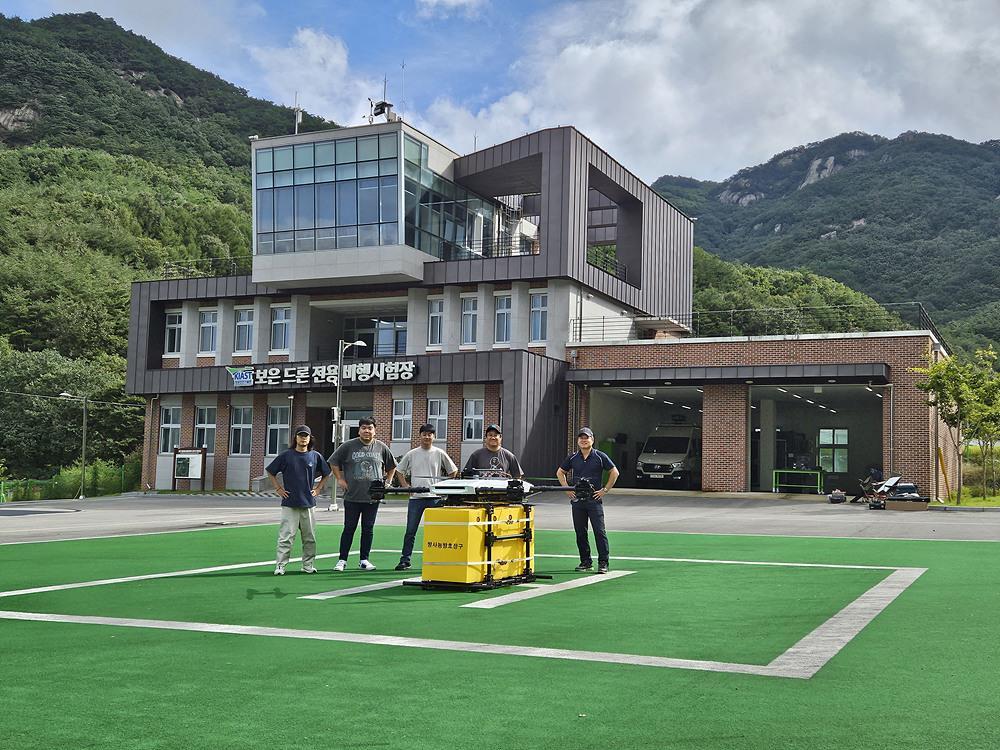 크게보기
크게보기At these sites, visitors can simply enjoy flying drones with ease—Vololand’s drone stations will handle all the management and power supply. Experiencing Korea’s tourist attractions, which feature clear seasonal changes and distinct beauty, from a drone’s aerial perspective is highly appealing. This business model would likely be well received by local governments. Moreover, it can also be proposed to overseas tourist destinations. It will help not only in promoting the adoption of drones and drone stations but also in shifting public perception.
Ahn Seong-ho, CEO:
That’s absolutely right. The two key areas of focus for the Ministry of Land, Infrastructure and Transport in the drone sector going forward are transport drones and leisure drones. Vololand has both the capability and achievements to address these two segments. If drone e-sports arenas or parks are created, we believe placing Vololand’s drone stations there would enhance both operational efficiency and safety. We will actively consider developing and advancing new technologies in this sector.
Kim Yu-gwang, Director:
Let me summarize. Vololand possesses a core, differentiated strength in its drone station technology. Strengthen that further. Secure technological capabilities for major drone components, including the flight controller, and work with other drone manufacturers to explore new use cases for drone stations. Continue to update your business plans around those opportunities. You must build an unmatched position in the drone station sector.
Once you’ve established that position, describe it clearly in your business plan and present it to the investment market. To secure top-tier talent, consider setting up a research center in the Seoul metropolitan area. I also recommend partnering with leading universities and research institutions in Korea to further develop drone technologies through academia-industry collaboration.
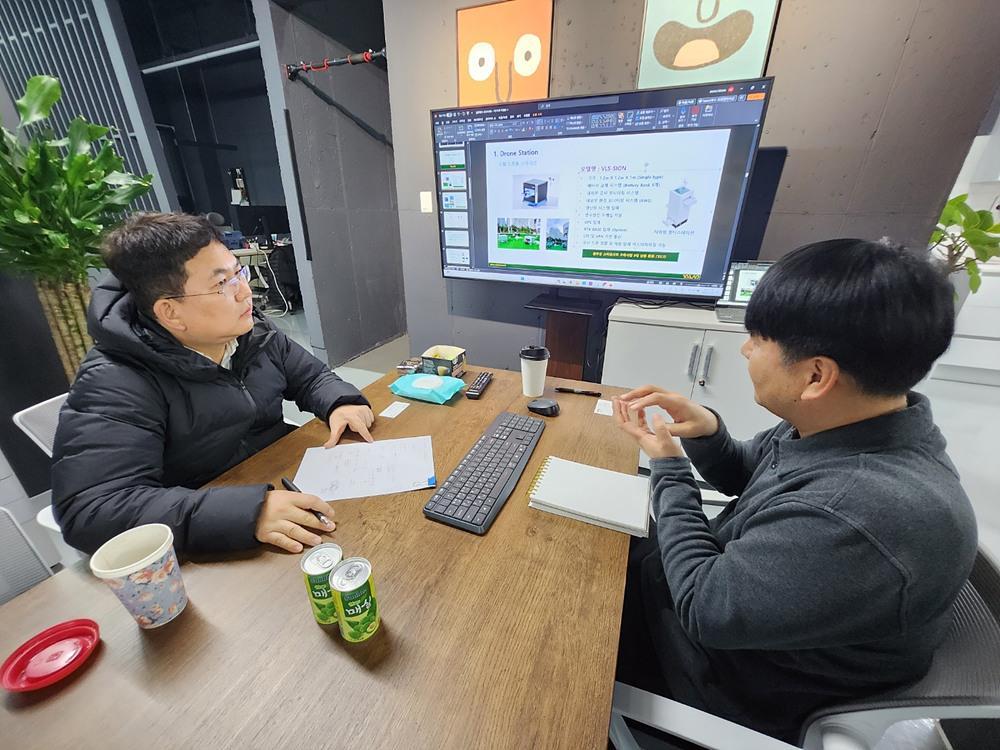 크게보기
크게보기What matters most is speed. If the business progresses too slowly, competitors will catch up—or even surpass you. Vololand must not remain a survival-focused company indefinitely. To become a leading drone company, you must continue developing technology, expand your business domains, solidify your position, and make a definitive move into the global market. And I believe Vololand has the capability to do so. Keep this in mind and push forward with urgency and momentum.
Reporter Cha Joo-kyung, IT Dong-A (racingcar@itdonga.com)
